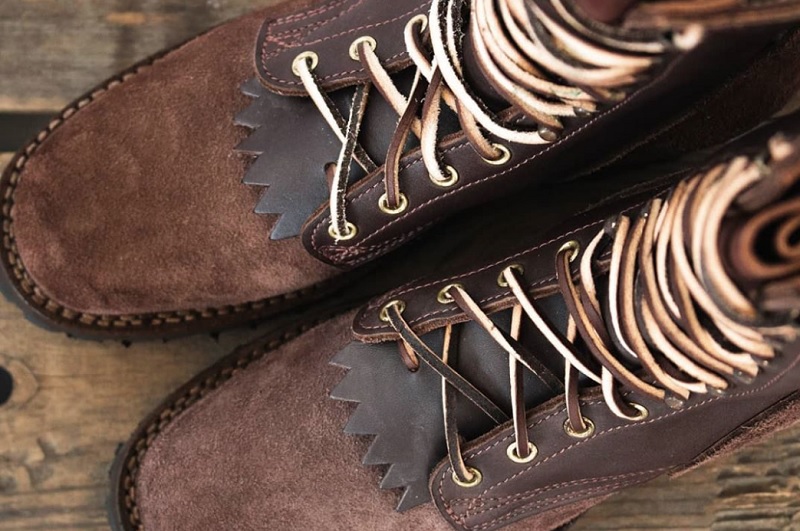"Kiltie boots" are a pair of boots that have a kiltie installed on the vamp, which is a piece of leather that guards the tongue of the boot. While you would presume them to be ornamental due to their unique appearance, a kiltie is actually a functional addition to footwear.
The kiltie has actually been around for quite some time in practical footwear, originating in the United Kingdom a few centuries ago. It used to be far more common in more outdoor footwear rather than work boots.
Do you need one? "Need" is a bit strong, but it certainly isn't a bad idea to have one added to your boots if you happen to be hard on your footwear due to doing hard work on your feet in the outdoors.
A "kiltie" is a term used to describe an additional piece of leather that covers the bottom of the tongue of a leather boot or shoe. The exact design of the kiltie depends on what type of shoe or boot it's being applied to.
In the fullness of time, kilties have evolved into two primary applications, namely kiltie boots and kiltie shoes. The former are leather boots that have a kiltie added in the form of a false tongue, and the latter are a style of leather loafers that originated in Scotland, according to legend, which was/is the genesis of the kiltie.
The story goes that kilties were added to the leather brogues that gentlemen in the day wore, and were especially preferred when paired with a kilt, thus leading to the name. The idea, according to various versions of this story around the web, is that an additional leather flap was added to the tongue of the loafer-style shoes commonly worn by the gentry, with a leather tassel, decorative laces, a buckle or leather fringe added for decoration.
The function of the kiltie was to protect the laces or provide something of a mudflap for the shoes of the wearer, which was necessary for the Scottish gentry. Scotland is known for being muddy when it isn't frozen solid, so having that extra bit of protection was a boon to the wearer.
Granted, wearing a taller boot or shoe would have been just as good an idea, but so much for that.
Kiltie Boots Today

Today's kiltie boots are a bit different, as "kiltie boots" are quite different from the shoes that - according to legend - gave rise to the item in question.
Kiltie boots is essentially a colloquial term used to refer to more or less any boot that has a (seemingly) decorative false tongue, which covers the tongue of the boot at the bottom. While it appears to just be an insert that slips under the laces, a kiltie is actually a functional accessory.
A false tongue puts an additional layer between the laces and the tongue, which has a couple of benefits. It acts as a brush guard, protecting the tongue from dirt, dust and other debris that accumulate on the laces and therefore minimizes the ingress of same into the boot via the tongue. The tongue of the boot is also protected from wear by a kiltie.
Kiltie shoes are today really for decorative purposes, as they're little more than moccasins that have an extra strap of layer attached to the top. In previous eras, kiltie shoes had taller heels, but became more of a fashion statement than being practical footwear for the well-heeled laird o' the manor over the years.
How Do I Wear A Kiltie?
If you don't order a kiltie with your boots, you can purchase them separately and install them yourself.
To start, you'll have to completely unlace your boots. Lay the kiltie between the tongue and the upper, with the bottom of the kiltie extending down onto the vamp of the boot.
Some kilties have a pair of holes near the bottom. You can choose to thread the laces through them, or to simply snug them in place. That's up to you, but the better practice would be to thread the laces through the kiltie in order to hold them securely in place. This will provide a better seal against the tongue.
While you would assume it's a fringe of sorts to dress up a work boot, a kiltie is actually a functional addition to a pair of work boots. If you happen to work in dirty, dusty or wet and muddy conditions, you're better off getting a pair of boots that have them or possibly purchasing a false tongue to add to a set of boots.





































